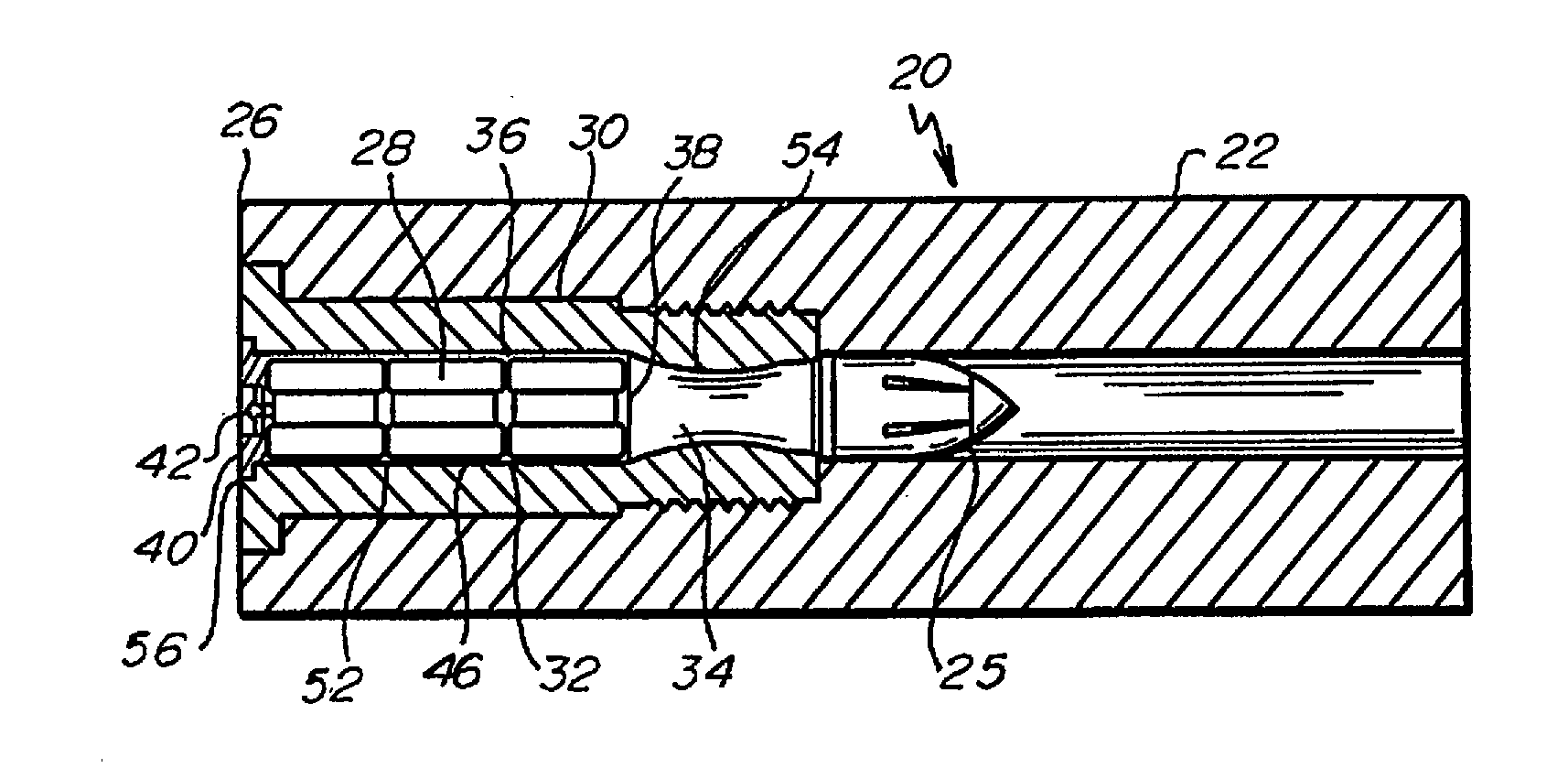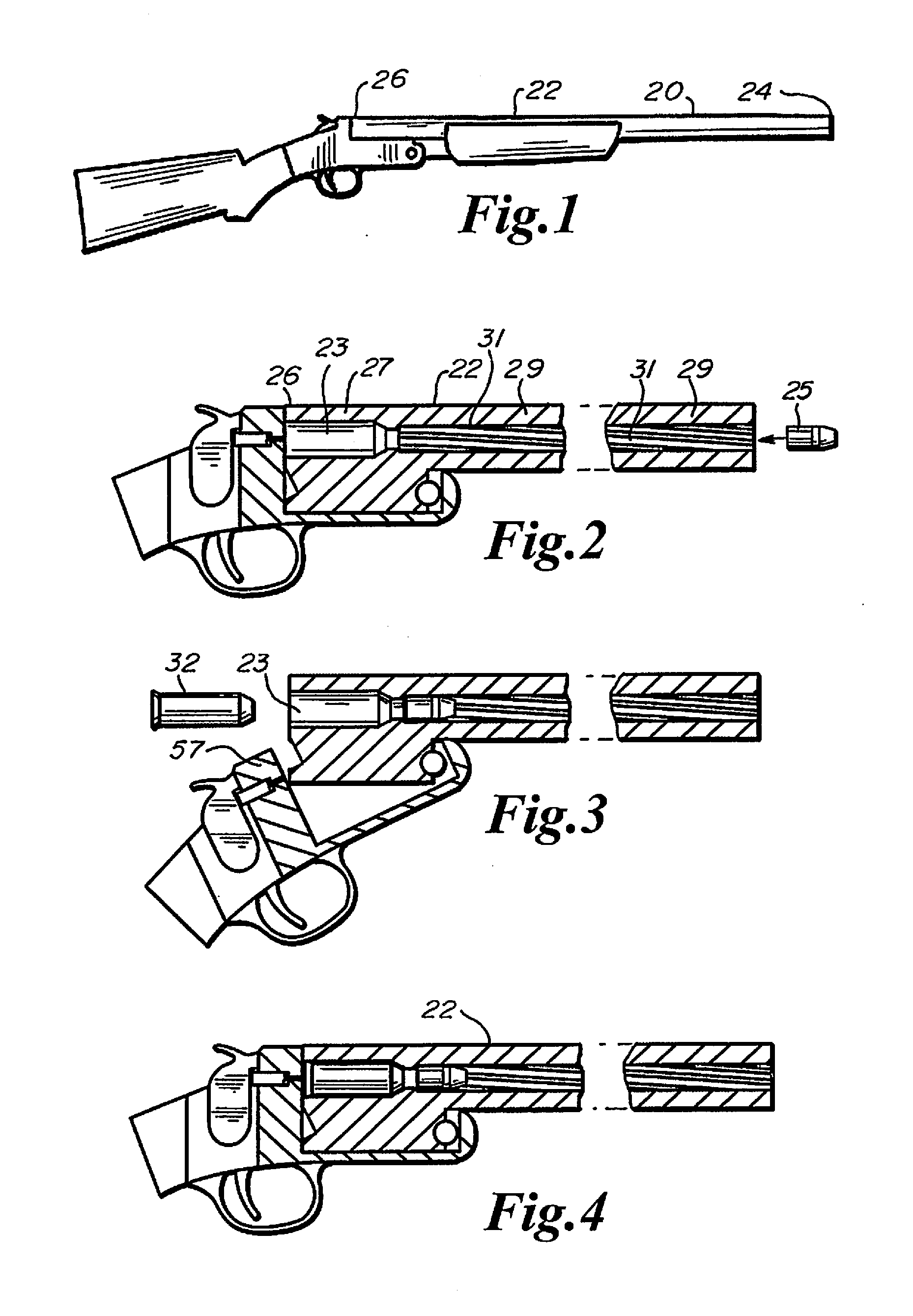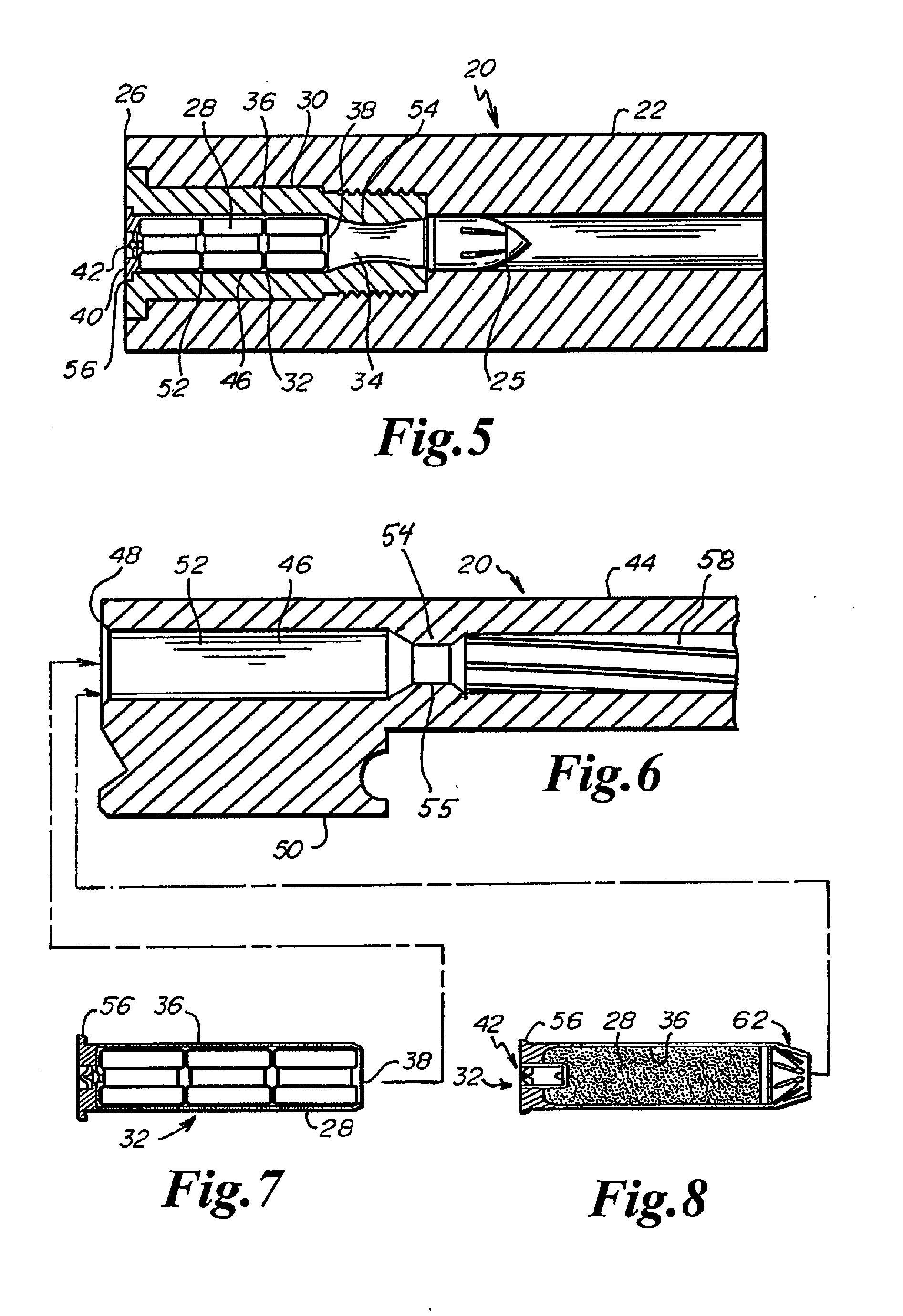The friction between the bullet and the
barrel can complicate the determination as to whether the bullet has been pushed far enough down the barrel during loading and is properly seated against the propellant charge.
The relative position of the bullet to the propellant charge changes the pressurization of the barrel behind the bullet from the ignited propellant gases impacting the ballistic performance and potentially creating a substantial
safety risk.
A concern with muzzleloaders is that the slower burning propellant required by muzzleloaders often foul the barrel with unconsumed residue requiring frequent cleaning of the barrel.
The
fouling can be severe enough that the barrel must be cleaned after every shot.
The
fouling can also interfere with the operation of the bullet and / or bullet with cup or
sabot, causing damage to the cup and affect performance.
In addition to contributing the
fouling of the barrel, the deformation or damage to the
sabot can impart wobble into the bullet or otherwise
impact the ballistic performance of the bullet.
Variability in the
powder and bullet of course causes variability in performance including accuracy.
Although this approach is relatively easy to implement and widely used, the visual indicator approach detracts from the primary advantages of muzzleloaders.
As the visual indicator approach is set based on a particular propellant charge and bullet combination, a variation in the propellant charge that changes the dimensions of the propellant charge can render the visual indicator at best useless or at worse a
safety risk giving a false appearance of a properly seated bullet.
In addition to the hazards posed by an improperly loaded propellant, the process for unloading an unfired muzzleloader can also
pose a significant safety challenge.
The bullet extraction and propellant charge removal process is highly dangerous as the user's hands and head are near the muzzle of the barrel and could be struck if the muzzleloader accidentally discharged.
Moreover, the muzzleloader is typically not aimed at a particular target during unloading and can cause further injury if not aimed in a safe direction.
The inherent risks associated with the conventional method of unloading muzzleloaders are such that the conventional wisdom for safely unloading a muzzleloader is to fire the muzzleloader into the ground or in a safe direction rather than attempt a risky extraction of the bullet and removal of the propellant charge.
However, unloading the muzzleloader by firing the muzzleloader prior to leaving
a site can spook the target game and other
wildlife at that site and spoil the site for a period of time.
Although certain laws are tailored to permit hunters to transport an otherwise loaded muzzleloader during hunting provided the primer is removed from the hole, the propellant charge and bullet are still seated within the barrel during transport posing a lessoned, but still substantial
safety risk.
As discussed above, the fouling can interfere with the
safe operation of the muzzleloader as well as the ballistic performance of the bullet.
In a hunting situation where the muzzleloader may be fired several times to unload the muzzleloader for transport, the barrel may require cleaning, which can be difficult in the field.
While the approach is effective in safely separating the propellant charge from the bullet, a common problem with removable breech plugs is
seizing of the breech plug within the barrel.
The rapid temperature changes during firing as well as the corrosive nature of many of the propellants can result in
seizing of the corresponding threads of the breech plug and the barrel.
If not carefully maintained, the breech plug will become difficult to remove to efficiently unload of the muzzleloader.
A related concern is that the performance of the hygroscopic propellant itself can be easily and often detrimentally impacted by the environmental conditions in which the propellant is stored.
The sensitivity of the propellant can often result in “hang fires” where the ignition of the propellant charge is delayed or the propellant charge fails to ignite altogether.
Hang fires are frequent occurrences and create a substantial risk for the user.
The unloading process through the muzzle of the muzzleloader is particularly dangerous in hang fire situations as the propellant charge may ignite during the actual unloading process.
Similarly, unloading through a breech plug can similarly be dangerous as the propellant charge may ignite as the breech plug is removed.
While measures are often used to provide a constant quantity of propellant for each propellant charge, the measures can be difficult to use in the field or in low light situation when hunting often occurs.
As with measuring the quantity of
powder, errors can occur in loading the appropriate number of
pellets.
 Login to View More
Login to View More  Login to View More
Login to View More 


